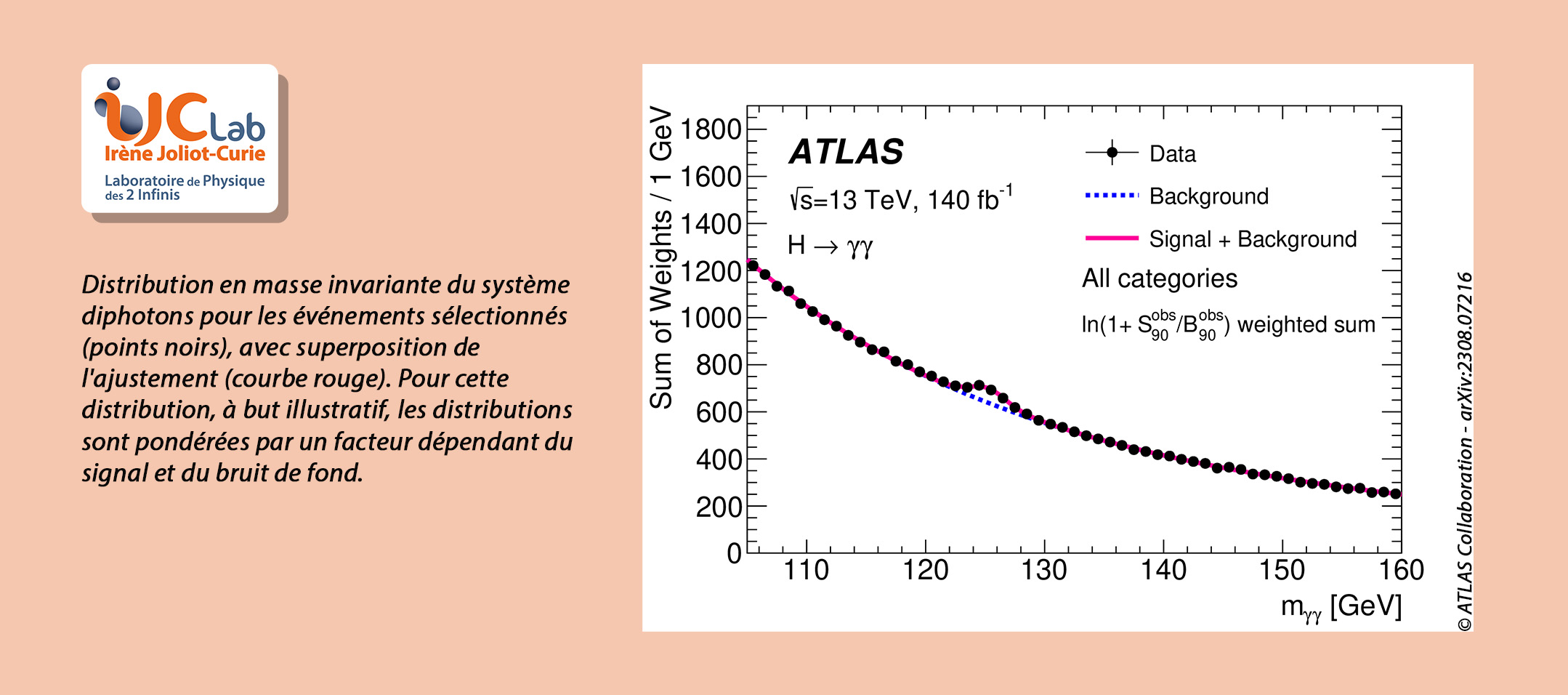
Since the discovery of a scalar boson, called the Higgs boson, by the ATLAS and CMS experiments at the LHC, researchers have been probing its properties to compare them to the predictions of the theoretical model that constitutes the Standard Model: different modes of production and decay, inclusive or differential production rate, mass and width of the distribution of this signal, quantum numbers (spin, parity conjugation), tests of compatibility of measurements with new physics, etc.
Among these properties, the mass of the Higgs boson is a crucial parameter. In particular, it makes it possible to determine the expected production and disintegration rates with different granularities, up to the so-called STXS (Simplified Template Cross[X]-Section) granularity. It also constitutes, with the mass of the top quark, a parameter for predicting the evolution of our current universe towards a stable or unstable configuration. Over the next decade, the mass of the Higgs would make it possible to test the consistency of the Standard Model, by comparison with future measurements of the Higgs double production rate.The decay of the Higgs boson into pairs of photons, a key channel when it was discovered, is also used to measure this mass. Although rare, this channel benefits from a clean signal emerging above a smooth continuum of background noise. This measurement is based on one of the ATLAS sub-detectors: the electromagnetic calorimeter, dedicated to measuring the energy of electrons and photons. The effective energy of these objects, measured in the electromagnetic calorimeter, is calibrated, that is to say corrected, to take into account, among other things, the energy deposits upstream of this sub-detector. The methodology is based on the use of Z boson decays into electron/positron pairs to compare the data with the simulation. The calibration has been refined compared to the past by adding a dependence on energy, called linearity, which makes it possible to constrain systematic uncertainties.
This new calibration was used to measure the Higgs mass in the two-photon decay channel with the LHC Run 2 data set. It made it possible to reduce the systematic uncertainties by a factor of 2. By combining the data from Run 2 and Run 1, ATLAS measures a Higgs mass of 125.22 +/- 0.14 GeV, corresponding to a precision of 1. 1 per thousand, the most precise result announced. Linghua Guo's thesis, carried out at IJCLab and defended in September 2022, was fundamental in obtaining the results of these analyses. That of Oleksii Lukianchuk, also carried out in the laboratory and supported in September 2023, allowed important verifications.
For more information: calibration of the ATLAS electromagnetic calorimeter and measurement of the Higgs mass with the H channel ->gamma gamma























